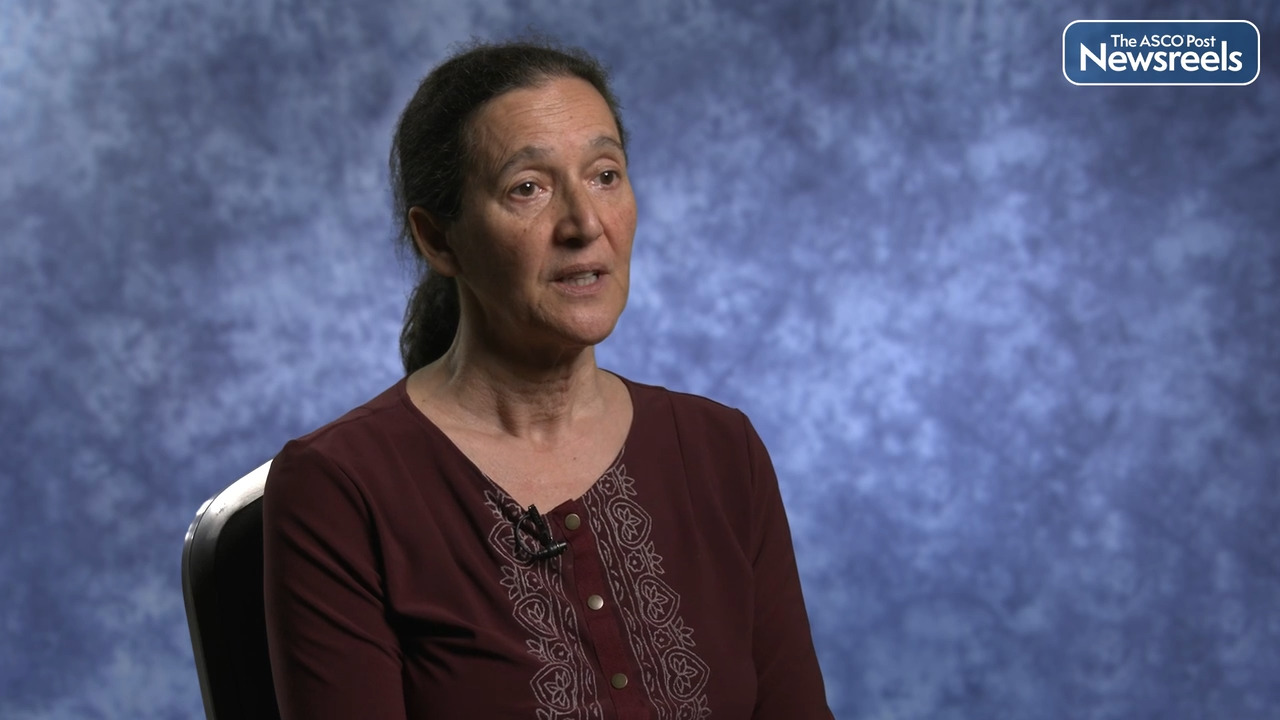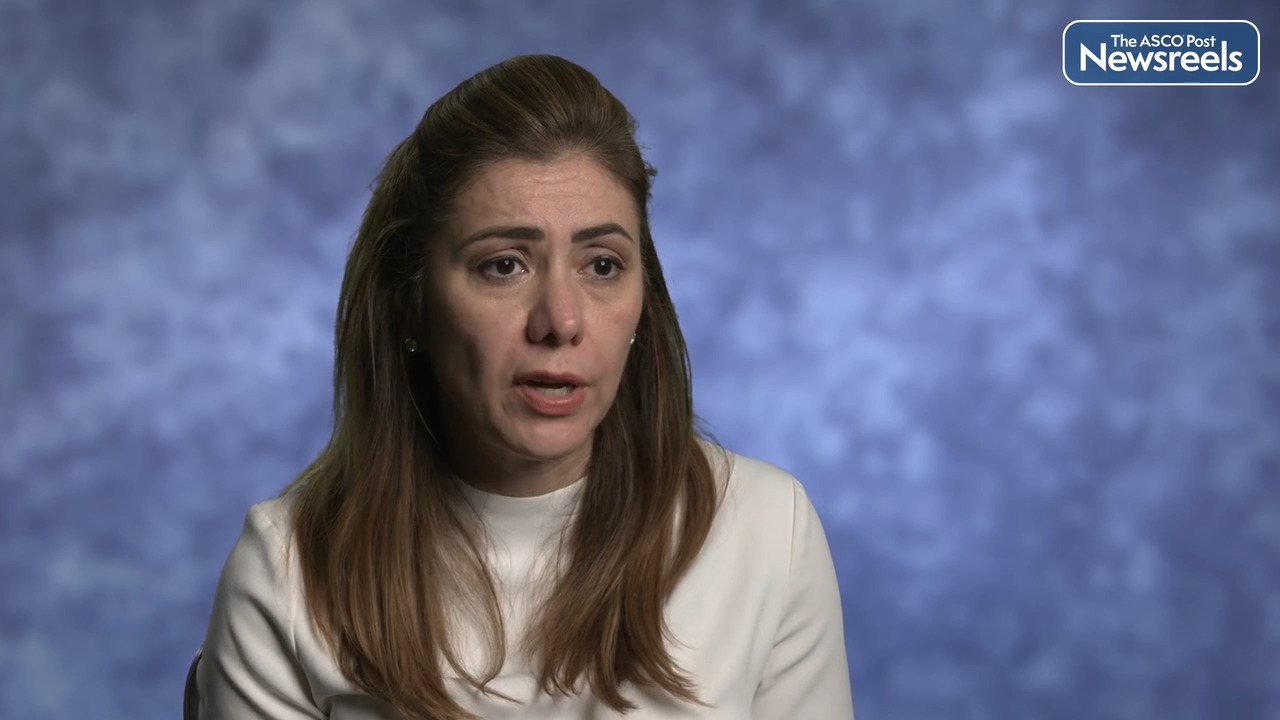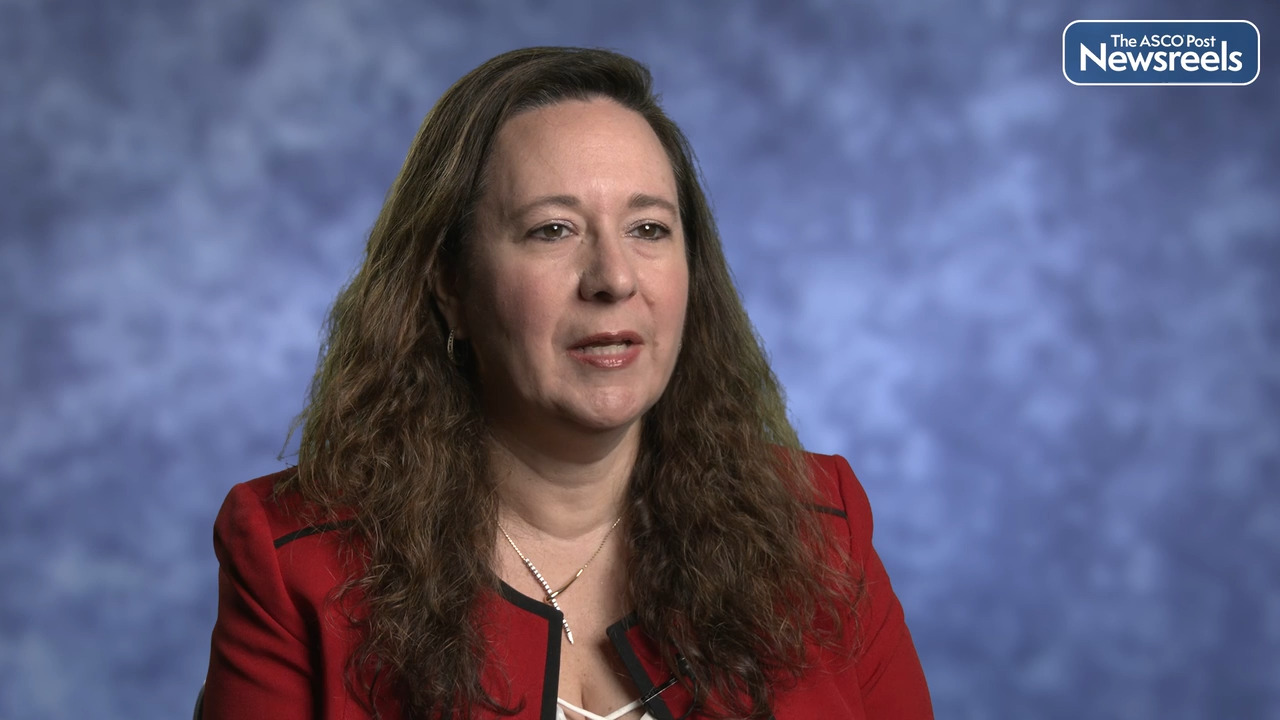François-Clément Bidard, MD, PhD: Circulating Tumor Cells May Help Improve Outcomes in Metastatic Disease
2022 San Antonio Breast Cancer Symposium
François-Clément Bidard, MD, PhD, of the Institut Curie, discusses overall survival results from the STIC CTC trial. To guide the choice between chemotherapy and endocrine therapy for patients with metastatic, estrogen receptor–positive/HER2-negative breast cancer, researchers compared circulating tumor cell (CTC) count to physician’s choice of treatment. The data suggest that the CTC count resulted in better long-term outcomes (Abstract GS3-09).
Transcript
Disclaimer: This video transcript has not been proofread or edited and may contain errors.
The purpose of the STIC CTC study was to interrogate the clinical utility of circulating tumor cell count as a biomarker to drive the treatment decision between endocrine therapy and chemotherapy in ER-positive HER2-negative metastatic breast cancer patients. What we did is we collected, on one hand, the clinicians best estimate whether a patient should be treated with endocrine therapy or chemotherapy, and on the other hand, we also collected a circulating tumor cell count by the CELLSEARCH system.
Then, the design of our study is like the MINDACT trial, so patients with concurrent estimates. Patients for whom endocrine therapy was a best treatment option according to physician's choice and also had a low CTC count, these patients were treated with endocrine therapy. On the other side of the spectrum, patients that were to be treated with chemotherapy according to the physician and a high CTC count also received chemotherapy.
What is interesting is that we had 40% of patient with discrepant estimates between the clinician estimates and the CTC count. What the overall survival results reported earlier show is we have a benefit in terms of overall survival for the population of patients who were clinical low, which means endocrine therapy was a favorite treatment option according to the physician, and had a CTC-high count. And so these patients were treated with chemotherapy in the experimental arm. That benefit is very clinically meaningful, because the delta, the difference, between the two median overall survival was 16 months.
The main limitation of our trial is that the trial was run prior to the use of CDK4/6 inhibitor in first line. I have to be clear here, our results do not apply to CDK4/6 inhibitor naive-patients. For these patients, endocrine therapy plus CDK4/6 inhibitor must remain standard of care and the CTC count has not demonstrated any utility in that setting. However, what is very relevant is that CDK4/6 inhibitors are now moving to the adjuvant setting and we also have patients that are progressing on first-line CDK4/6 inhibitor. We know that for these patients we currently don't know exactly how to propose the best treatment between a first line of chemotherapy and/or a further line of endocrine therapy, and we believe that our results advocate in favor of the use of circulating tumor cell count as one of several biomarkers that could help improving the second-line therapy.
In the next year to come, there will be performed changes in the way we treat patients and the second-line setting. For some patients, will have, still, endocrine therapy agents, for other patients who will have chemotherapy or antibody-drug conjugates. We will have to integrate many biomarkers, which could be ESR1 mutation, which could be HER2-low status. The STIC CTC trial advocates in favor of fusing the circulating tumor cell counts. It is not the only biomarker, but it is a strong prognostic biomarker that could help deciding between different treatment options.
The ASCO Post Staff
Prudence A. Francis, MD, of the Peter MacCallum Cancer Centre, discusses an update of the SOFT trial, which showed that adding ovarian function suppression (OFS) to adjuvant tamoxifen for premenopausal women with estrogen receptor (ER)-positive breast cancer reduces the risk of recurrence. OFS enables the use of adjuvant aromatase inhibitors as an alternative to tamoxifen, which can further reduce recurrence of ER-positive, HER2-negative disease. Very young women—those younger than 35 years old—should be considered for OFS, according to Dr. Francis. In addition, tamoxifen alone is appropriate in women with low-risk clinical-pathologic features.
The ASCO Post Staff
Ann H. Partridge, MD, MPH, of Dana-Farber Cancer Institute, discusses results from the POSITIVE trial, which showed that a temporary interruption of endocrine therapy in women with hormone-responsive breast cancer in order to attempt pregnancy, does not affect short-term disease outcomes. The study found that 74% of women had at least one pregnancy, most (70%) within 2 years. Birth defects were low (2%) and were not clearly associated with treatment exposure. Dr. Partridge explains that these data stress the need to incorporate patient-centered reproductive health care in the treatment and follow-up of young women with breast cancer (Abstract GS4-09).
The ASCO Post Staff
Mariana Chavez-MacGregor, MD, MSc, of The University of Texas MD Anderson Cancer Center, discusses phase III results from the SWOG S1207 trial which was designed to evaluate the role of adjuvant everolimus in combination with adjuvant endocrine therapy among patients with high-risk, hormone receptor–positive, HER2-negative early-stage breast cancer. Adding everolimus did not improve invasive disease–free or overall survival and was associated with high rates of adverse events (Abstract GS1-07).
The ASCO Post Staff
Judy C. Boughey, MD, of Mayo Clinic, talks about why breast-conserving therapy may be a treatment option for some patients with multiple breast lesions. For most patients who present with two or three sites of cancer in one breast, mastectomy is recommended. But results from the ACOSOG Z11102 (Alliance) suggest that for women with multiple ipsilateral breast cancer, breast-conserving surgery with adjuvant radiation therapy and lumpectomy site boosts may be beneficial (Abstract GS4-01).
The ASCO Post Staff
Sean Khozin, MD, MPH, of the Massachusetts Institute of Technology, discusses the “external validity deficits” of randomized clinical trials, which still involve only about 5% of adults with cancer, who may differ in important ways from real-world populations. Dr. Khozin describes the reasons for low levels of participation and advocates for capturing the experience of patients not represented in traditional clinical trials, so real-world data can address these validity deficits.





